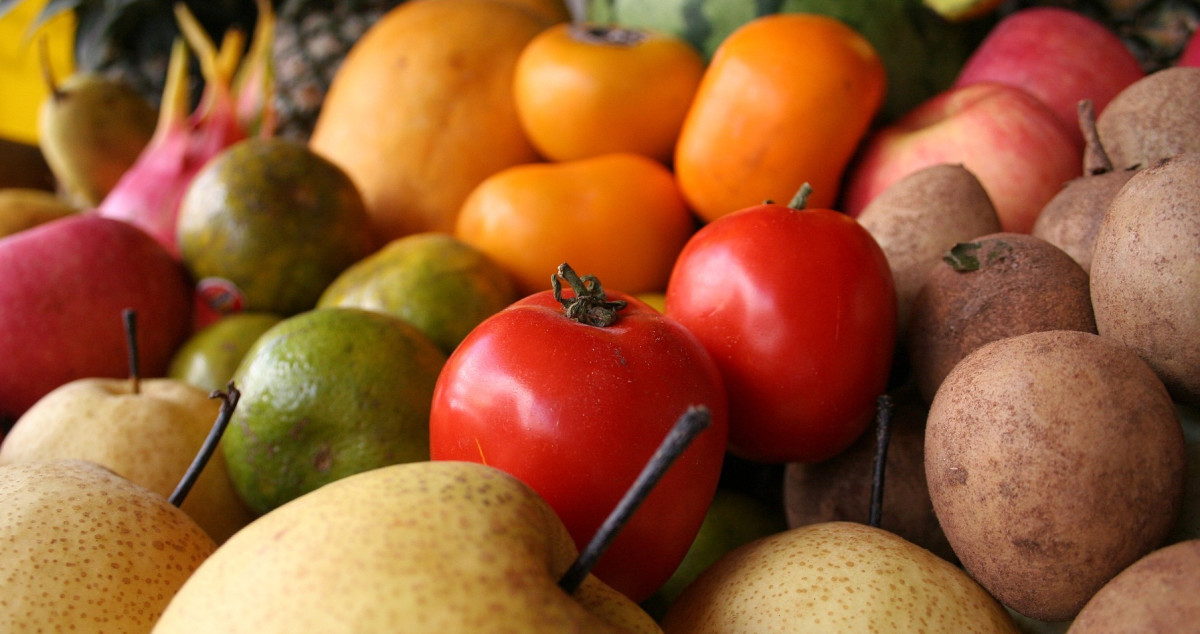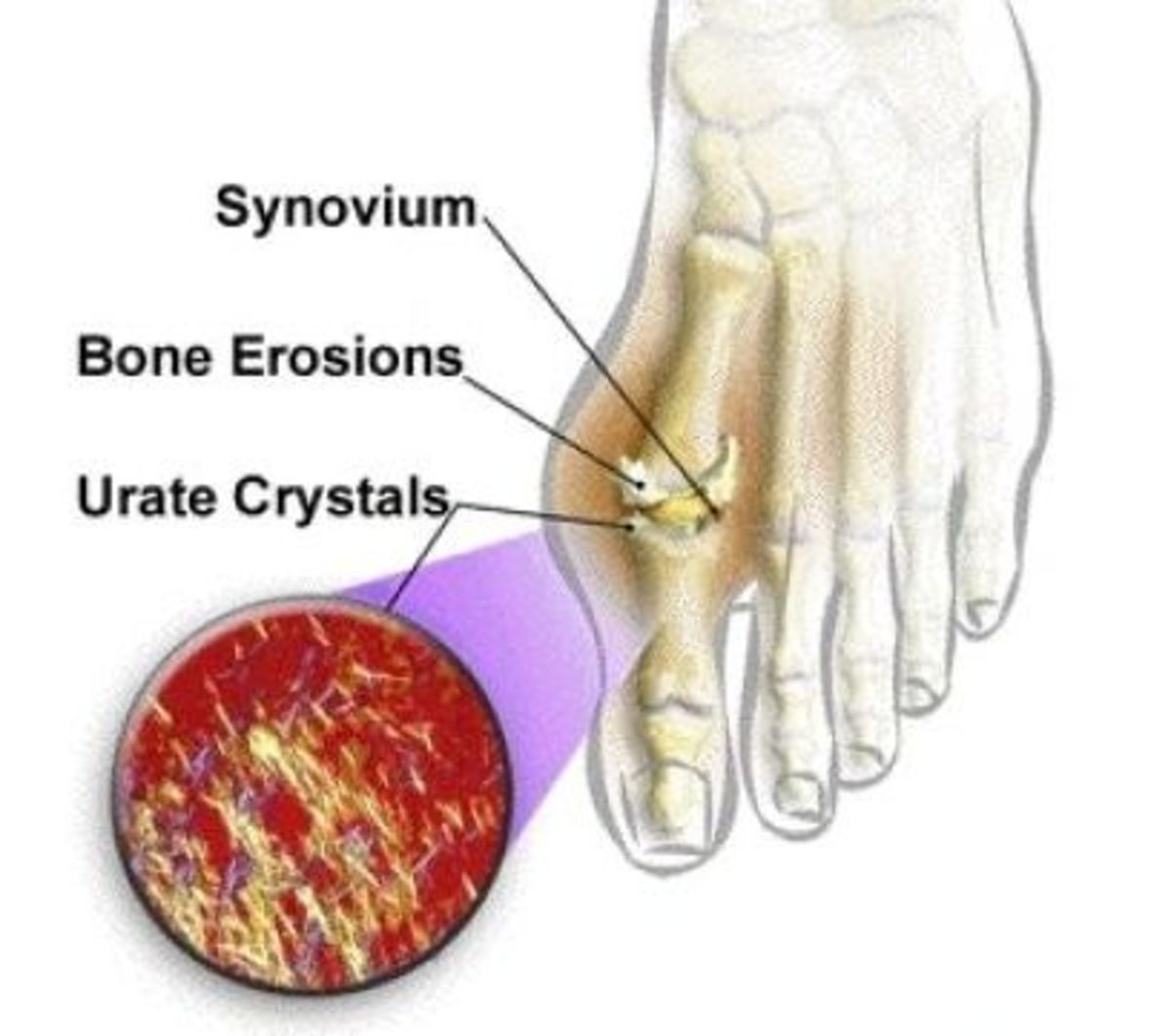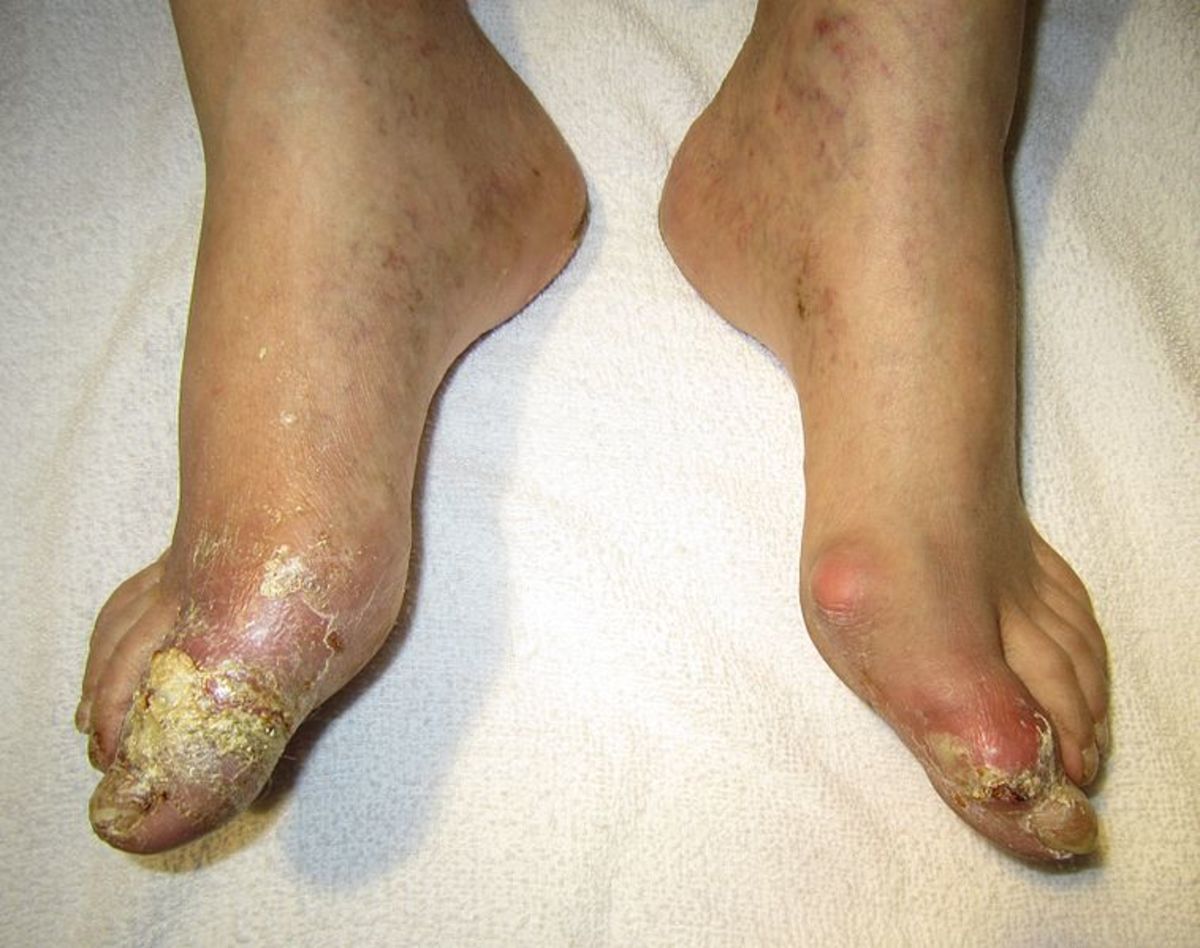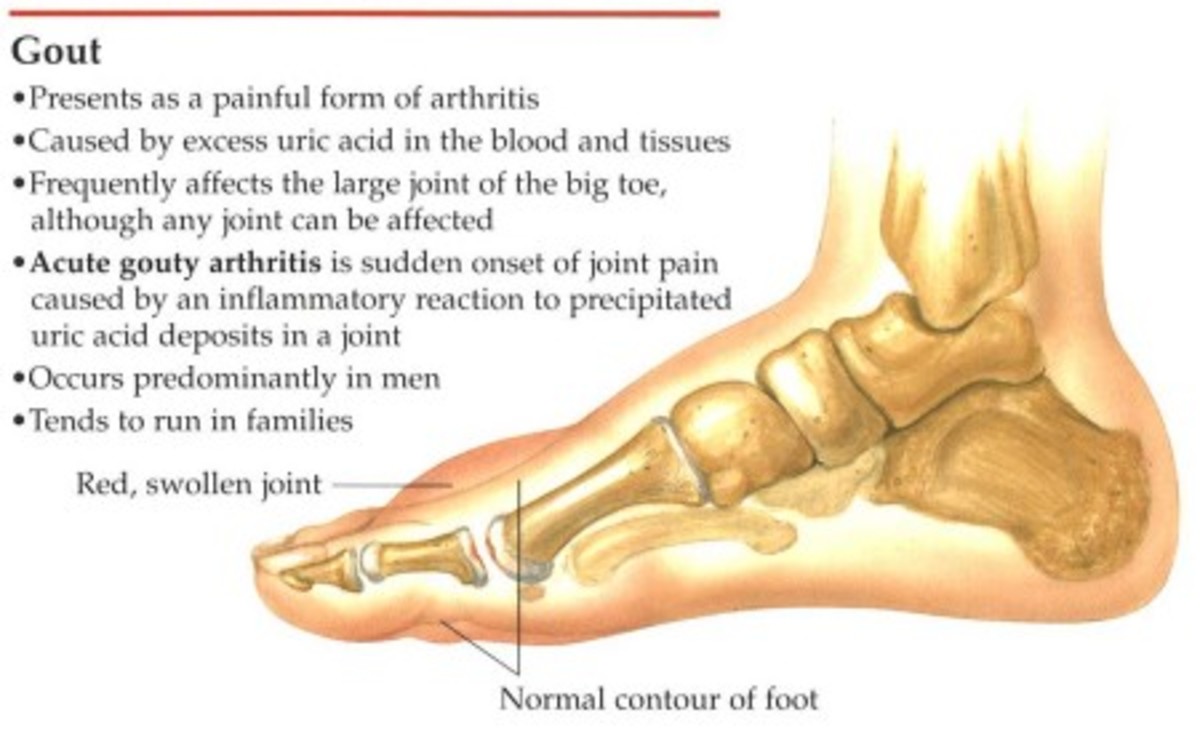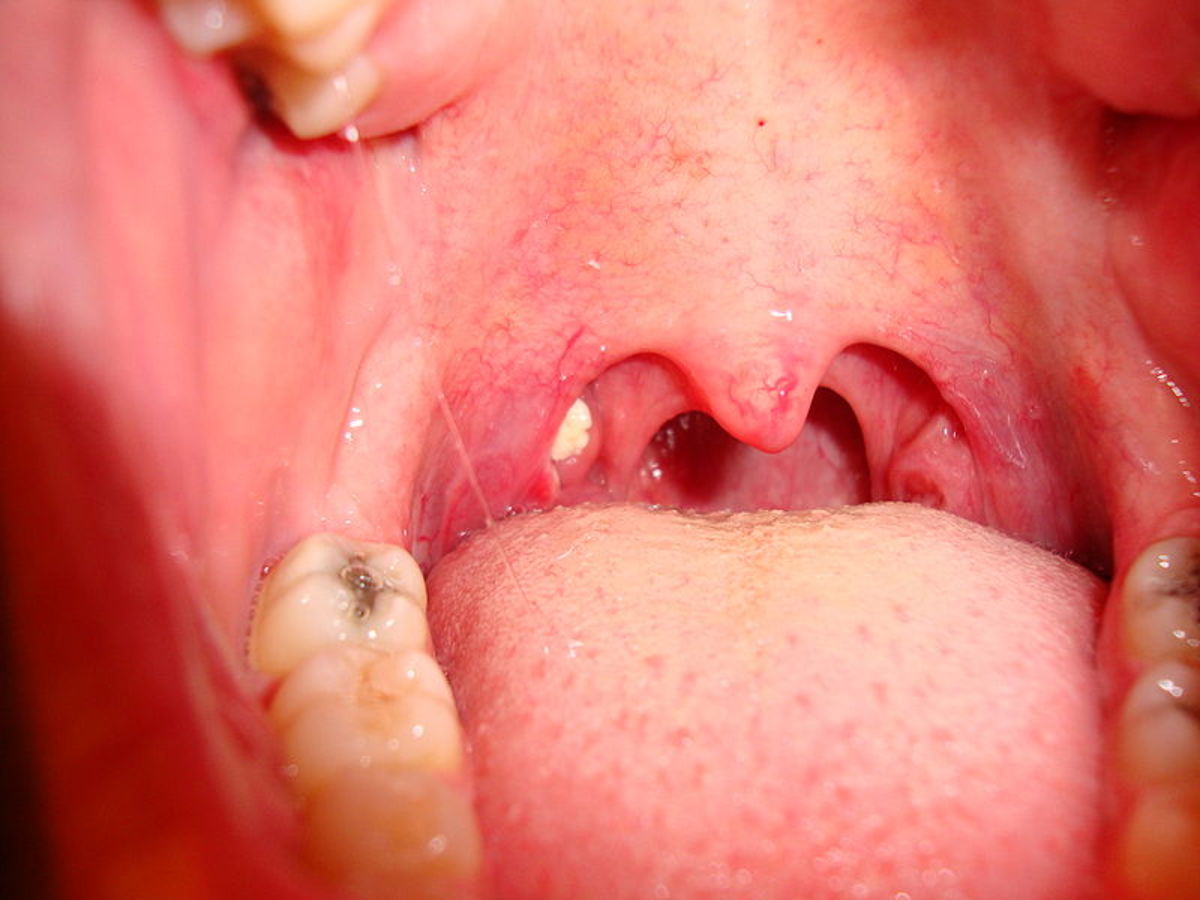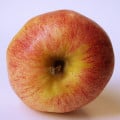Gout - A Natural Approach
A Joint With Gout
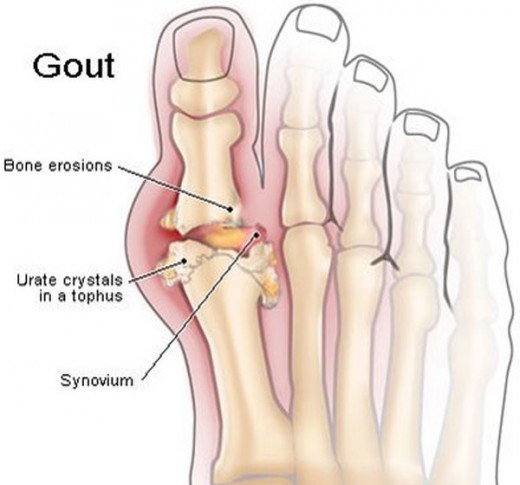
Definition and Causes of Gout
Gout is a reasonably common problem (about 2% of the population, higher in men) that has a partially unjustified reputation for being a disease of rich living. It does appear more often in older people and is associated with what would often be called rich food, but can happen to almost anyone.
Gout is an inflammatory disorder that starts with the accumulation of deposits of crystalline uric acid in the body, particularly in the joints. For some unknown reason, the joints of the big toes are the most common place for gout to start; so the cartoonists have that bit right!
Symptoms of gout, at least initially, are red, shiny and inflamed joints; commonly affected joints include the big toes, other foot joints and ankles. Movement becomes painful. If the problem is not addressed, then uric acid deposits can start forming under the skin; because the skin is thin on the ears and around the eyes, and also under the skin near the inflamed joints. These deposits are called tophi.
Gout can be distinguished from other inflammatory disorders such as rheumatoid arthritis, because in many cases gout is associated with a condition called hyperuricaemia. This condition consists basically of a higher-than-normal blood level of uric acid.
Uric acid is found in everyone’s blood, because it is a breakdown product of substances called purines. Purines form part of the structure of DNA and RNA, and when worn-out cells are broken down or foods high in purines are eaten (virtually all food contains at least some purines) then the uric acid goes into the bloodstream from where the kidneys filter it out as they do various other toxins.
As with other body functions, this process has limits. If the kidneys are asked to get rid of large amounts of uric acid over long periods of time, then they become unable to cope and the uric acid accumulates in the blood. Because uric acid is actually not very soluble in water, the excess can then start forming crystalline deposits, leading to gout. Furthermore, high levels of uric acid in the blood lead to high levels in the urine, and this can sometimes lead to other problems such as kidney stones. Very high levels can eventually lead to kidney failure.
Causes of uric acid accumulation
Risk factors for hyperuricaemia include:
· High intake of purine-rich foods; these foods increase uric acid levels in the body. Common foods with this property include red meat, shellfish and particularly various forms of organ meat and offal.
· High alcohol intake; alcohol in large amount causes dehydration (concentrating everything in the blood) and some alcoholic drinks increase uric acid levels by other means. Highly coloured drinks such as red wine, brandy and port contain large amounts of tannin, which block excretion of uric acid, and beer contains large amounts of purines from the yeast used to brew it.
· Genetic factors are also present in gout – gout often runs in families. There is not much you can do about this of course, other than be extra careful if blood relatives have or have had gout.
· Obesity; it is not certain whether obesity is a contributory cause of gout or the obesity is a consequence of the same lifestyle that makes gout more likely. However, erring on the side of caution can’t hurt.
· High blood pressure; hypertension is linked to gout and high uric acid levels.
Medications; some drugs (including diuretics, aspirin and cancer chemotherapy agents) increase uric acid levels. In the case of chemotherapy drugs, the reason is that the drug is doing its job – as tumour cells are killed off, they break down and release large amounts of purines (from their DNA and RNA) into the bloodstream. This is quite serious, but not actually much of an issue; after all, if you are being treated for cancer you might reasonably expect to be under close medical attention, and this is a problem well known to oncologists.
Prevention and Treatment of Gout
Conventional treatment of gout includes dietary advice; for a change, conventional medicine and the complementary approach are in agreement about this. Drugs used for gout include various anti-inflammatories and painkillers, usually only used during flare-ups. There is a specific drug used for gout, called allopurinol, which works by inhibiting uric acid production. However, it has a lot of side effects (some of them very serious) and is usually only used as a last resort.
Natural treatments include dietary measures and some botanicals; although good nutrition is always a good idea, there are no specific nutrients that help with gout.
Avoidance of high-purine foods
Foods to reduce or eliminate consumption of to avoid gout include offal meats, red meat, shellfish, fish roe and pulses such as peas, lentils and beans. These should be replaced with low-purine foods such as fruit, vegetables, grains, seeds and nuts.
Reducing alcohol intake
Alcoholic drinks make gout worse in various ways. Beer, red wine and port are particularly bad in this respect, but limiting alcohol to 1 or 2 units per day is a good idea. Switching to other drinks such as vodka and gin may be a good idea.
Drink plenty of fluid
Drinking plenty of fluid, particularly water, helps keep the uric acid diluted and also helps its excretion.
Exercise and weight loss
Always a good idea, sufficient exercise and avoiding obesity are particularly important for people prone to gout. Rapid weight loss should probably be avoided; this has been shown to increase blood uric acid levels.
Herbal and Botanical Remedies
Black cherries and their juice (particularly Californian Monterey cherries) help remove uric acid from the body; they also have very strong antioxidant effects. Other herbals of use for this purpose include devil’s claw, nettles and especially celery and celery seed.
Celery and celery seed in particular can be useful aids, because it is easy to add fairly large amounts of them to stews and soups. This is especially the case because celery, unlike many herbal remedies, actually has a taste that most people like! The substance responsible for the taste and smell of celery and celery seed is the same one that has medicinal effect.
Of course, all these measures should be taken under professional supervision.

